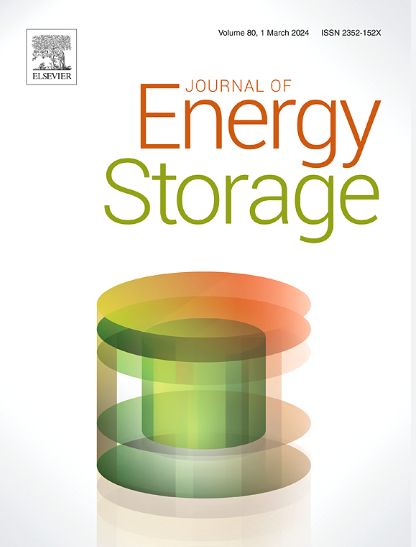Assessing hydrogen storage potential in Zechstein salt caverns of the Norwegian North Sea
IF 8.9
2区 工程技术
Q1 ENERGY & FUELS
引用次数: 0
Abstract
Underground hydrogen storage (UHS) in salt caverns offers a viable solution for balancing intermittent renewable energy sources like wind and solar. This study evaluates UHS potential in the southern Norwegian North Sea, focusing on Upper Permian Zechstein salt structures. Using well log and seismic data, we characterize the salt structures and identify those suitable for cavern development. Through a GIS-based analysis and the GeoH2 tool, we estimate storage capacity across low, base, and high scenarios. In the base case, ∼8700 caverns across 143 salt domes could store ∼11,164 Bscf of hydrogen, equating to ∼900 TWh of energy. After accounting for 22 % non-halite content estimated from well logs, this is reduced to 699 TWh—about three times Norway's annual energy consumption. The alignment of UHS in salt caverns with ongoing and planned CO2 storage and wind energy projects, could transform the Norwegian Continental Shelf into a hub for low-carbon energy, supporting Europe's transition to a sustainable energy system.
评估挪威北海Zechstein盐穴储氢潜力
盐穴地下储氢(UHS)为平衡风能和太阳能等间歇性可再生能源提供了可行的解决方案。该研究评估了挪威北海南部的UHS潜力,重点是上二叠统Zechstein盐构造。利用测井和地震资料,对含盐构造进行了表征,并确定了适合溶洞开发的含盐构造。通过基于gis的分析和GeoH2工具,我们估计了低、基本和高场景下的存储容量。在基本情况下,横跨143个盐穹的~ 8700个洞穴可以储存~ 11164 Bscf的氢,相当于~ 900太瓦时的能量。从测井数据中估算出22%的非岩盐含量后,这一数值降至699太瓦时,约为挪威年能源消耗的三倍。盐洞中的UHS与正在进行和计划中的二氧化碳储存和风能项目相结合,可以将挪威大陆架转变为低碳能源中心,支持欧洲向可持续能源系统的过渡。
本文章由计算机程序翻译,如有差异,请以英文原文为准。
求助全文
约1分钟内获得全文
求助全文
来源期刊

Journal of energy storage
Energy-Renewable Energy, Sustainability and the Environment
CiteScore
11.80
自引率
24.50%
发文量
2262
审稿时长
69 days
期刊介绍:
Journal of energy storage focusses on all aspects of energy storage, in particular systems integration, electric grid integration, modelling and analysis, novel energy storage technologies, sizing and management strategies, business models for operation of storage systems and energy storage developments worldwide.
 求助内容:
求助内容: 应助结果提醒方式:
应助结果提醒方式:


